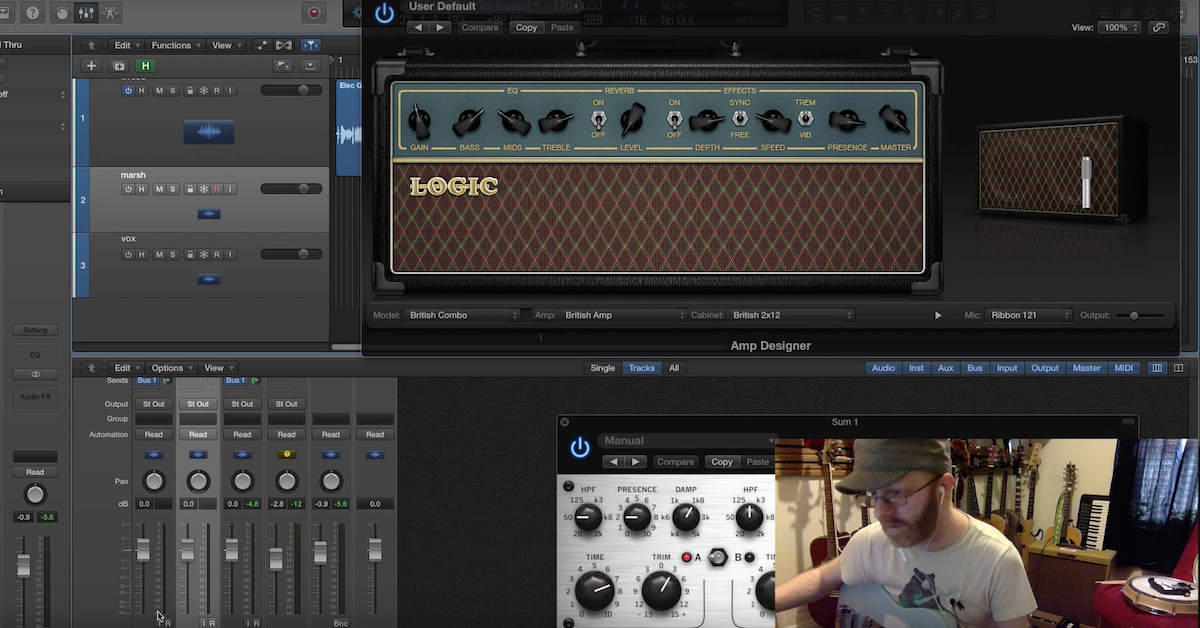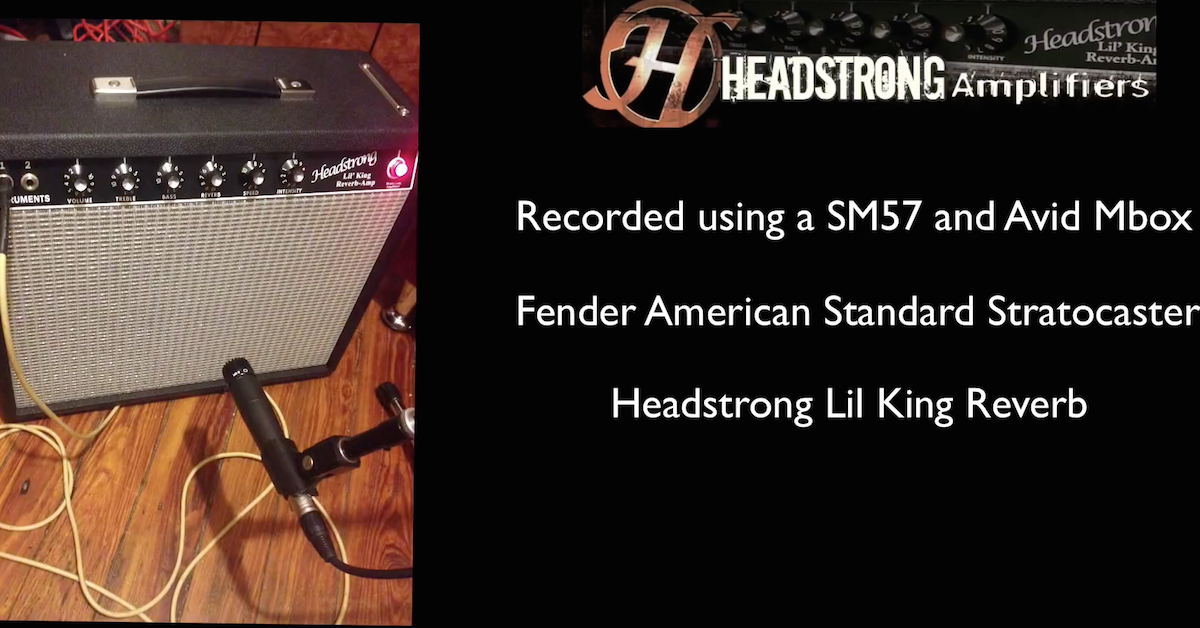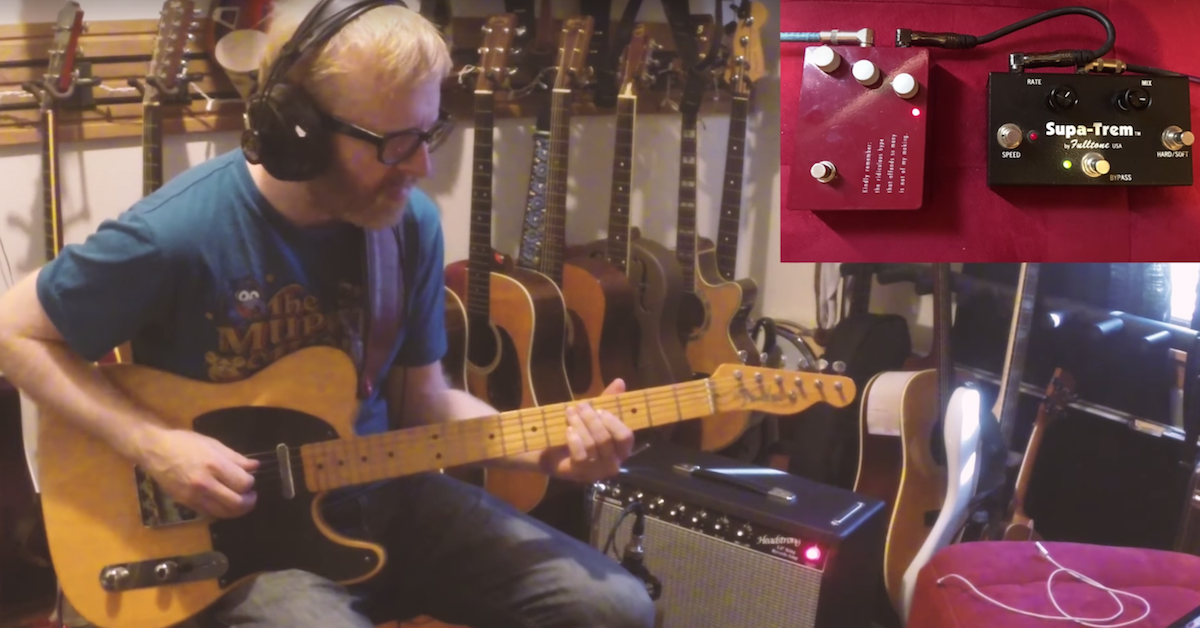7 Guitar Amps That Defined Music Eras
Article Content
Writing an article like this is difficult because as we study different eras of music, we will find a collection of musical tools used to create those tones. However, there are a few standouts that are worth discussing.
I consider there to be four major food groups when it comes to guitar amp association, and most paths lead back to Marshall, Fender, Vox and Mesa Boogie. Yes, there was Magnatone, Standel, Supro, Gibson, and others that made fantastic amps. But, they weren’t recorded as much as the amps I’m going to discuss in this article. I do encourage you to research more in-depth the variety of guitar amp tone throughout the history of electric music.
Fender
Fender amps may vary from era to era, but in general, they’re characterized by the fact they use 6v6 tubes. The 6v6 tone has become known as the American sound. 6V6 amps are unique not only in the way they break up and feel but in the way it sounds. 6v6 tubes can allow for a lot of power and clean headroom.
I’m going to mention several Fender amps. Although the circuits changed from era to era, a staple was 6v6 power tubes.
Brownface Era
There is a bit of a misunderstanding of the guitar amps used for many of the most famous surf records. It’s been incorrectly documented that the surf guitar amp of choice was the Fender Twin Reverb. However, the blackface Twin Reverb amp wasn’t released until after the surge of surf music.
There were Twin amps before 1964, but they didn’t have built-in reverb. They also had harmonic or bias tremolo as opposed to signal oscillating tremolo. This generation of Fender amps also sounded different as they were the blonde/brownface circuit. Tonally they sat in-between the tweed and blackface models. They had a throaty tone with a tighter low end. They didn’t have the mid-range scoop that the blackface model had.
With that said, most surf guitarists between 1960-64 didn’t use the Twin. The most popular amp, as used by Dick Dale (who also influenced its design) was the Dual Showman.
Some will say that the Showman and the Twin are very similar amps, which isn’t entirely correct. For instance, Dick Dale favored 15″ speakers with his Showman. Also, keep in mind this is pre-1964, so his Showman’s were the blonde series. Again, not the scooped blackface models.
You could find other brownface or blonde models getting used as well as a Vibrolux, Deluxe, Bassman and even the Princeton.
One point worth making about the surf era is the guitar tones aren’t quite as clean as people think. There is a little grit to the sound. Some of the grit was due to the outboard Fender Tube Spring reverb units placed before the guitar input of the amp.
But not all surf music was the Fender tone. The Shadows recorded some of the most famous surf tones in England. Guitarist Hank Marvin used a Vox AC15 on tunes like “Apache” and “Man of Mystery”.
(Fender Telecaster straight into a Fender Brownface Princeton played by Nicky Barbato.)
Modern equivalent: Headstrong Amps are making the brownface circuit, and Wayne knows the ins and outs of that tone.
Tweed Era
The tweed era of Fender amps was the inspiration for Marshall amps. Jim Marshall based his circuits off of the Fender tweed Bassman. Jim Marshall may have used the tweed Bassman as a reference, but he used parts that were available in the UK, which led to a unique flavor.
Those of us that love tweed amps also tend to adore early Marshall circuits. Tweeds are raw and expressive. They’re unapologetic. They have lots of rich midrange, and when cranked, they can get fuzzy.
You can hear a lot of tweed in recordings of the 1950s. Tweed Bassmans are a favorite of blues artists like Buddy Guy. Buddy Holly favored his Fender Tweed Pro with a 15″ speaker.
But, guitarists’ love of tweed didn’t stop in the ’50s. Artists like Neil Young and Joe Walsh used a tweed Deluxe as a staple of their tone. Eric Clapton and Duane Allman both played through tweed Champs on the Layla record.
(Fender Stratocaster with FSC 59’s pickups straight into a Victoria 518 Tweed.)
Modern equivalent: Victoria amps make my favorite modern tweeds. They sound nearly identical to old ones minus some age.
Blackface Era
I’ve already spent some time talking about the Blackface era. Some great tone examples of this era are Mike Bloomfield, Roy Buchannon, BB King, and Jerry Garcia, to name a few.
(Fender Stratocaster with FSC 60’s pickups straight into a Headstrong Lil King Reverb.)
Modern equivalent: Headstrong amps gets the second recommendation in this article. I swear by my Headstrong Lil King reverb. Guitarists always ask about that amp in amazement. It’s legit Blackface even down to the cabinet construction and speaker baffle.
Silverface Era
Fender started to make Silverface amps in the late ’60s after CBS purchased the company and released the Silverface line.
You can see Silverface amps in The Beatles Let it Be movie. The Sex Pistols recorded Never Mind The Bollocks with a Silverface Twin Reverb. Bob Marley also liked Silverface Fender amps.
John Fogerty used a Silverface Deluxe on the CCR recording of Up Around the Bend. Freddie King can also be spotted playing a Silverface Quad Reverb in the early ’70s.
You will find that with all of these companies, different eras of circuits have drastically different personalities.
Vox
Vox amps are primarily associated with EL84 tubes. Amps built around EL84 tubes tend to be chimey and have a midrange crunch. They fall under the British tone category, but are often associated with more clean tones than Marshall, even though they can get crunchy.
Vox amps are synonymous with Brit Pop of the early to mid-’60s. The most popular use of them are from The Beatles. The Beatles famously used the Vox AC30 on their early records. You can hear the AC30 in all its glory on The Beatles records up until Revolver and Rubber Soul.
Many other British bands also used Vox, including The Rolling Stones on their early records. Because of how ingrained the records from The Beatles and Stones became in our musical memory, the gravitation towards the Vox sound carried into new eras of music. You will find rich Vox tones on Tom Petty and the Heartbreakers albums.
Brian May used Vox AC30s cranked with a Dallas Rangemaster Treble Booster before it to get his signature sound.
(1964 Guild Starfire straight into a Vox AC15.)
Modern equivalent: This is going to be a little controversial, but I just haven’t found a boutique amp that sounds the same as a real Vox. I like Matchless amps, but they don’t sound like an AC30 or AC15. There is something different. Not bad, just not accurate. So, for this reason, I use a Vox AC15 made in the ’90s. The new custom shop Vox amps sound good too.
The only two circuits I don’t use boutique amps with are Vox and Marshall.
Marshall
Plexi
The most popular power tube used in Marshall amps is the EL34. Yes, there were other tubes used from time to time, but the Marshall tone is most associated with the EL34 sound, which is punchy, loud and breaks up early.
Usually, when the discussion of the Marshall Plexi comes up, there are a few sonic examples that come to mind instantly. Jimi Hendrix, Cream-era Clapton, AC/DC, Van Halen, and The Ramones are just a few of the poster children for the Plexi circuit.
Marshall amps naturally overdrive in a way that other amps don’t. As guitarists started wanting more overdrive and volume, they leaned on Marshall amps.
(Gibson Les Paul with Florence 59’s pickups straight into a Marshall SV20H.)
You might be surprised to know that some classic clean guitar tones came from the Marshall Plexi circuit.
Andy Summers from The Police used a Marshall Plexi on the first three Police Records. What you’re mostly hearing is a Fender Telecaster through a Marshall Plexi with the occasional addition of an Electro Harmonix Electric Mistress, Dyna Comp, or Maestro Echoplex.
James Honeymoon Scott from the Pretenders played through a Marshall Plexi on the first couple of Pretenders records.
James Hetfield from Metallica used a Plexi for his guitar parts on Kill ‘Em All. He paired it with a Pro Co RAT for his signature thrash metal tone of the time.
Modern equivalent: I tend to favor boutique amps. However, there are a few exceptions. Marshall amps have done a fantastic job with the SV20H. It’s a 20 watt Plexi that records beautifully.
JCM800
There are a lot of amps in the Marshall line worthy of discussion. But, for me, I tend to break them down into two categories: Plexi and JCM. The JCM line debuted in 1981 with the JCM800. These high powered amps with a master volume and switchable channels became a staple for the hair metal and rock of the ’80s.
JMC800’s have a very distinctive sound and react differently than a Plexi.
Some notable users include Ian MacKaye, Jeff Beck, Kirk Hammett, Mick Mars, Tom Morello, and Dave Mustaine.
Modern equivalent: Along with the Marshall SV20H, Marshall also makes a 20-watt JCM800. I would recommend trying it out!
Mesa Boogie
Dual Rectifier
Mesa Boogie amps often get branded with the American tone, meaning they are 6V6-based amps. Mesa amps tend to be loud and clean. The overdrive on the amps tends to come from preamp saturation rather than straight power tube saturation.
You could characterize this saturation as being tighter than the overdrive from a non-master volume Marshall amp.
The grunge era was ripe with great guitar tones from bands like Nirvana and Soundgarden. Both of these bands were combining amps for their guitar tone. Chris Cornell used a mid 70’s Marshall JMP and a Mesa Boogie Dual Rectifier.
Although there was a second amp in combination, it’s clear the Mesa Dual rectifier was an essential part of the tone.
(Gibson Les Paul with ‘57 Classics pickups straight into a Mesa Boogie Dual Rectifier played by Bob Stander)
Modern equivalent: Mesa Boogie is still cranking out well-built amps. Like Marshall, they now offer some lower wattage options for recording.
It’s essential to understand the makeup of each era of music. The guitar amp is a vital ingredient. If you play grunge through a Twin Reverb reverb, it isn’t going to sound or feel right. Even though it can be done in a pinch, it doesn’t lend itself well to it.
It’s not as easy to say the ’70s were the era of Marshall amps or the ’60s were the era of Vox. Each company had designs that fed the music of many time periods. There were definitely sonic trends but it’s more important to dissect key artists from specific genres of music. So, what sounds do you like, and what amps fueled those tones?








